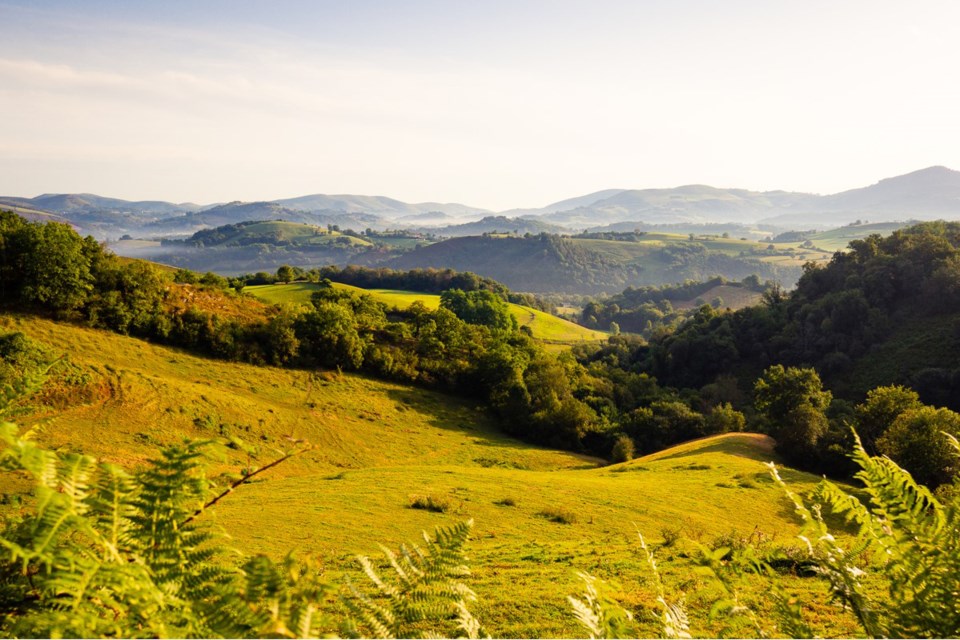For one Thorold man, a renowned pilgrimage route offered a more personal, meaningful challenge.
David Stephen decided the Camino de Santiago, or Pilgrimage at the end of the World, as it's sometimes called, offered a test of character and, when it was over, revealed a poignant truth.
In an interview with the Thorold News, he explained, "I did this because, a few years back, I read an article and they were interviewing people asking, 'What was the best year of your life?' For younger people, it was 25 and for older people it was 69. I just turned 69 in October. I started to think, 'What can I do to jumpstart my 69th year?' I had only heard about the Camino for the first time two years ago."
Camino de Santiago, or in English, the 'Way of Saint James,' is a network of walking Christian pilgrimages leading to the shrine of the apostle Saint James the Great.
According to the legend, in 812 AD a shepherd saw a light in the sky and he went toward it and found three bodies. He called a bishop who identified one of them as St. James, the apostle. A church built in Santiago de Compostela (St. James under the stars) is the capital of northwest Spain’s Galicia region. It’s known as the culmination of the Camino de Santiago pilgrimage route, and the alleged burial site of the Biblical apostle St. James.
He learned that prior to Christians starting this pilgrimage, the Druids made the trek for hundreds of years. That was because the path follows the Milky Way to Finisterre, which is Latin for "end of earth."
"I started doing research and saw how well it was organized in terms of accommodations. It was going to be an adventure and it was going to be a long duration. It's about 32 days to do the complete walk. The more I researched it, I thought, this is really cool," said Stephen.
He felt the 32 days would be too quick for him so he allowed himself 80 days to return. After he completed the walk, he went to Portugal and across Spain and to Africa.
"I flew into Madrid and my return flight home was from Barcelona so I could do a complete circuit of the country. I landed in Madrid and spent three days there. I took some tours and did some sightseeing. Then I took the train to Pamplona, a bus to Saint-Jean-Pied-de-Port, which is the starting point of the Camino francés, named because most of the pilgrims in the Middle Ages were French," he explained.
Stephen is not Catholic but noted, "If you're Catholic, it's a huge attraction. For a lot of people, it's just a unique adventure."
"The trip was different than what I expected. I'm not religious but was open to feeling a connection or spiritual moment. I did not get that. But I did, in the sense that I met all those people from around the world with a common goal."
And that, he said, formed his "Camino moment."
"I met people from all over the world. I have no idea how many but I met people from the Baltics, Sweden, Norway, Denmark, North and South Americans. There were lots of European and Asians. I think the biggest demographic was people from South Korea. There were lots of people from Japan and Taiwan, where I've heard that having walked the Camino on your resume is huge."
"I saw how universal we are as a people. We all are alike and despite all the attempts made to divide us, I just found that people have common goals about what they want out of life; black, white, North American, Asian - whatever. We all want the same things," Stephen discovered. "The most memorable thing on the trail was the people."
He discovered firsthand how people were willing and eager to help each other. A knee injury slowed him down and overcoming it heightened his sense of accomplishment.
"But I learned that I could do almost anything I chose to do. Mastering an android phone to book accommodations and travel, was major. I didn't know I could do all that but I learned I could handle almost anything thrown at me," he said.
The cell phone became his lifeline and he recounted one example of its importance.
"One ride cancelled on me, and I put out a call on social media for a ride and found someone going my way and I got to my destination. Learning all that gave me a sense of accomplishment," he said.
For him, the route chosen was 45 days, or about 795 km. There are many routes of varying lengths and starting places. For example, "If you complete the whole thing starting in Barcelona it's called Camino loco," laughed Stephen.
"I reached the end at Santiago and we were all congratulating each other for completing the Camino. Some wanted to come back and do another route, but for me, it was enough. I said 'Hell no, one and done'."
After completing the walk he went to Morocco and that, too, was memorable for Stephen. "I wanted to get into Africa. It was on my bucket wish and it fulfilled all I had expected. Taking a camel ride was tremendous."
In terms of meeting his goal as a memorable 69th year, "It was everything I had hoped for and more," he concluded.
For more information on the Camino, visit these websites: pilgrimagetraveler.com or caminoways.com.



